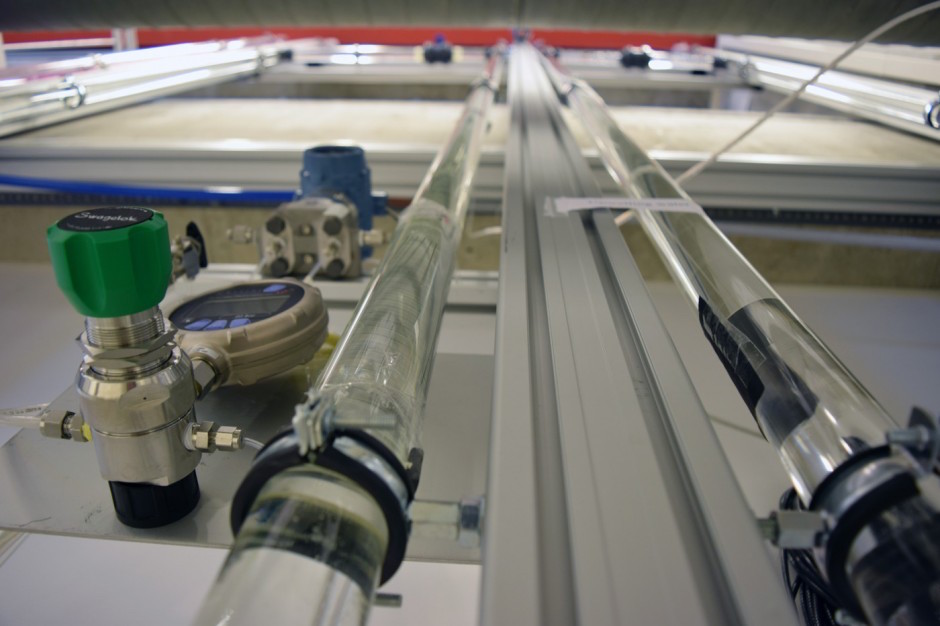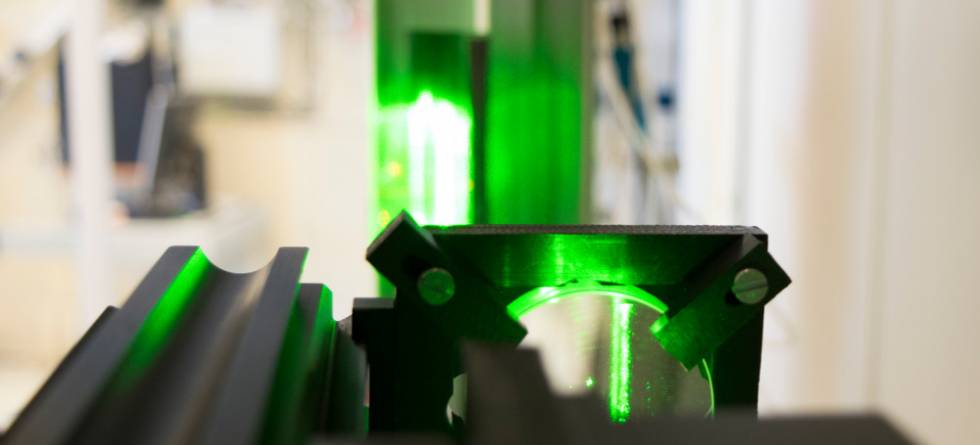Can ocean currents be replicated in a laboratory? The answer is yes, according to researchers at the Bjerknes Centre in Bergen and the University of Stavanger (UiS). They have constructed a 4.5 m high loop of plastic pipes, a laser gun and advanced measuring equipment for this very purpose.
Global circulation
The Atlantic Ocean's many water currents all flow in different directions and at different depths. When attempting to understand these currents, the salinity and temperature of the seawater are key factors.
Large-scale ocean currents are driven not just by the wind, but also by changes in water temperature ("thermo") and salinity ("halo"). These parameters affect the density of the water, causing it to either expand or contract. The physical changes cause movements in the water masses and help to form a global circulation of currents, from the warmest tropical seas to the coldest polar regions.
This process is known as "thermohaline circulation", and the Gulf Stream forms an important part of it. The North Atlantic branch of the Gulf Stream passes Norway on its way to the Arctic Ocean, and a return current passes Greenland and the Faroe Islands on its way back south again.
Simulation
It is this system that is set to be replicated in a laboratory at the University of Stavanger. Water of varying temperature and salinity will circulate through a plastic pipe in an attempt to simulate this vital oceanic circulation system.
The experiments will be conducted at the Multiphase Laboratory in the Department of Petroleum Engineering. In the laboratory, different fluids (known as "phases" in scientific circles) can be sent through pipe loops and channels. Using advanced measuring equipment such as high-speed cameras, lasers and ultrasound, the researchers will be able to study fluid flows in combination with gases or particles.

From oil to climate research
This type of experiment is normally conducted in order to study the flow of oil and gas in transport pipelines and to circulate out drill cuttings during the drilling of long, deep wells.
However, Professor Rune Wiggo Time and Senior Engineer Herimonja A. Rabenjafimanantsoa can see the benefits for other applications. They want to use similar flow systems to study the very ocean currents that interest the climate researchers at the Bjerknes Centre.

Fortunately, there is plenty of headroom in the laboratory, where transparent plastic pipes have been joined together to create a 4.5 m high, closed loop. Inside the pipe, a water current is generated through thermohaline circulation, without using pumps.
"The loop and circulation pattern are similar to what we use in experiments with 'gas lift' in wells to boost oil production", says Professor Time.
Nevertheless, the researchers will have to come up with a number of custom solutions in order to simulate the ocean currents. They will for example have to develop fast, extremely sensitive temperature gauges along with a computer-based control system in order to measure and regulate the temperature and salinity of the water at different points in the loop.
A delicate balance
In the real ocean, the water that originates from the southern Atlantic Ocean is warm and has a high salinity. Although the salt makes the water heavier, this is more than offset by the heat, which makes the water lighter. The ocean current is therefore normally shallow on its way north, typically covering the uppermost 400–800 metres of the water column.
Once it reaches the arctic regions, the water cools, but its salinity also decreases due to freshwater input from rivers and ice in and around the Arctic Ocean. Although the salinity is lower here, the water sinks due to the cold and becomes a "deep-water current" on its way south again. The cycle then repeats itself, over and over.
However, something has changed.
In recent years, the delicate balance between salinity and temperature has been disturbed by global warming, increased precipitation and accelerated ice melting. The melting of the Greenland ice sheet is an important factor in this picture. An increased input of freshwater is causing the surface water to become lighter, which in turn may cause less warm water to flow from the North Atlantic up along the Norwegian coast.
Marine researchers are constantly discussing whether the thermohaline circulation, including the Gulf Stream, is slowing because of this process.
A complex system
Once the experiment is under way, the researchers at the University of Stavanger will take measurements of the water flowing through the simulated ocean current. These measurements will help to adjust and check the validity of the ocean current models.
"Can you trust the data?"
"The theoretical models describe ocean currents in a fairly coarse, but accurate way. Reality is more complicated; there are many layers of "rivers" in the ocean and there are many driving forces that are difficult to predict", says Time.
Some driving forces are meteorological, being linked to precipitation, wind, waves and evaporation. Others are known as "forces of inertia" and are partly linked to the time involved when the deep oceans globally transport and store their cold and heavy water currents.
"Our laboratory experiment follows the theory as closely as possible and will reveal whether unknown factors are discovered, ones that have not been incorporated in the basic mathematical model. An important advantage of our experiment is the fact that, by making minor modifications, the experiment can be made more comprehensive in order to capture even more subtle factors", says Time.

